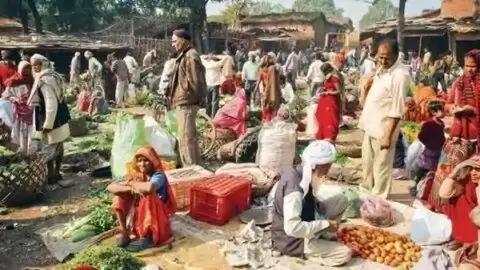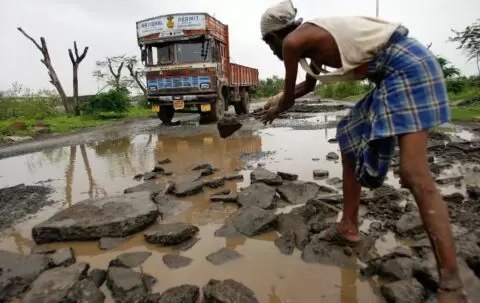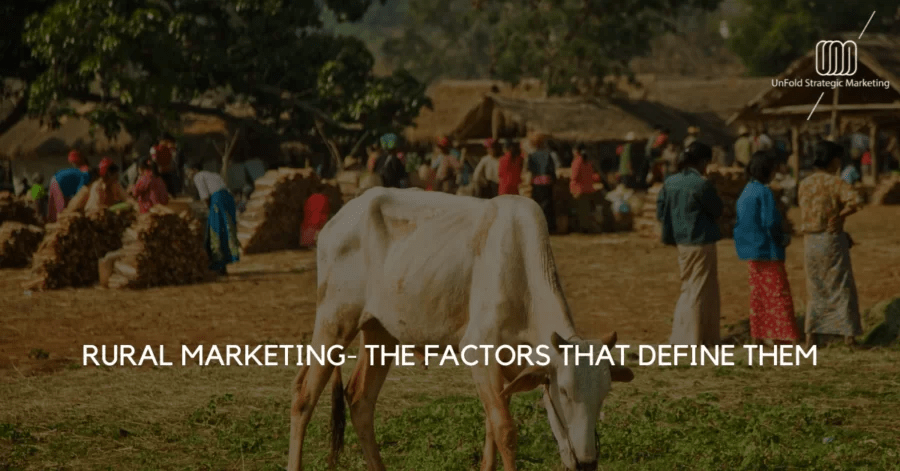Rural marketing can be defined as the product’s compilation, reasonable price, appropriate placing, and proper awareness. The marketing rule states that the right product should reach the right customer at the right price, through the suitable medium and at the right place.
The vastness of the rural market acts both as an opportunity and a challenge to the marketers. The desire to improve the living standards increases with time as the rural incomes are rising and poverty rates are witnessing a decreasing trend. Therefore, the marketing strategy that is put to use should consider the particular characteristics of rural areas and the attitudes and socio-psychological characteristics of the rural population.
The design and development of the strategies have to stem from a thorough understanding of the rural consumers. Rural consumers are primarily illiterate, socially and psychologically guided by leaders and more price sensitive. Therefore, it might come as a challenge, and the developed marketing strategies should address these concerns.
It is necessary to keep the following features of rural markets in mind to implement these strategies-
Scattered and diverse markets
The rural market in India is large and scattered in numerous regions. It accounts for around 75 crore consumers who live in more than 6 lakh villages spread across the mainland, covering an area of 32 lakh square kilometres. Covering such a high, diverse and scattered geographical market increases transportation and inventory costs, affecting the distribution system’s scheduled operations in rural areas.

Agriculture is the primary source of income.
Rural prosperity depends on agricultural prosperity. Agriculture is the primary source of livelihood for most people. Hence, in the event of a crop failure, the income of rural people. However, the dependency on agriculture has reduced due to low-key industrialisation in rural areas.
Low standards of living
A significant portion of the rural population is engaged in small scale agriculture and related occupations. The unreliability that looms large in rural income makes the rural population conscious about their purchase behaviour as they are sceptical about their future earnings. The majority of the people live below the poverty line and have low literacy rates.
Deep-rooted superstitions, cultural traditions and religious pressures affect their upward social mobility. In addition, the prosperity to save for future emergencies compels them to spend less even if they have a good income.
Traditional outlook
Villages have a traditional outlook and take their own time to develop. Even though change is an inevitable process, the village people take it slow and accept the changes gradually. They mostly resist changes that stem from the low literacy rates.
Poor infrastructure
One thing that distinguishes rural and urban markets is infrastructure. Unfortunately, most villages have the inadequate infrastructure to sustain a market. As a result, they use makeshift arrangements to sell their products. Infrastructural facilities like cemented roads, warehouses, and communication systems are pitiful. As a result, promotional and distribution activities are challenges.

Market growth
The rural market is growing gradually, and the demand for traditional products such as bicycles and agricultural inputs. The growth has not only been quantitative but qualitative as well. It can be attributed to the rural development programs, which created new employment opportunities and new sources of income. The green and the white revolutions are an example of how the development programs have revolutionised the agricultural sector in India. It resulted in increasing the potential of rural areas.
- Low Literacy Rates: The low literacy rates in villages are the root cause of erratic and disturbed communication for promotion purposes. The printMoreover, the print medium is ineffective and, to an extent, irrelevant in rural areas due to a lower reach.Promotional activities mainly depend on electronic media for their success. Radio broadcasts and television advertisements are effective when it comes to promotion. Rural literacy has improved as people have started migrating to urban areas for higher education. Awareness among the farmers has increased, and they are more well informed about the world around them. Farmers are also educating themselves on the new technologies being introduced and hope for a better lifestyle.
- Diverse socio-economic backgrounds: Due to uneven land fertility and dispersion of geographical areas, rural people have different socio-economic grounds, which ultimately affects the rural market. In addition, villagers have different religions, and cultural beliefs and socio-cultural backgrounds influence consumers’ willingness to accept new products.The variations in behaviour create a need for different sets of products in different areas. In addition, it calls for a need to segment the rural markets to ensure profitability and cater to their needs effectively.
- Purchasing capacity : The purchasing power of people in rural areas is affected by several direct and indirect factors. To a large extent, Indian agriculture is dependent on rainfall which affects productivity and thereby the rural income. The demand for consumer goods is thus indirectly affected by rainfall. However, introducing advanced irrigation systems as a part of government schemes has helped farmers maintain a steady income.Marketers, as a result, have started to realise the potential of developing the rural markets as a part of their strategy.Rural markets across the country have experienced some form of urbanisation, but one still needs to work on the grass root levels to make their product more appealing and earn a profit.

